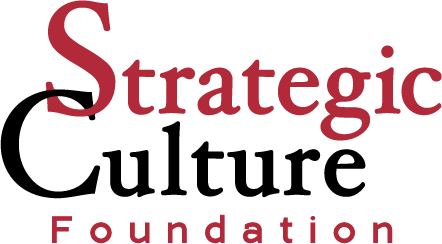Join us on Telegram![]() , Twitter
, Twitter![]() , and VK
, and VK![]() .
.
Contact us: info@strategic-culture.su
After Abu Mohammad al-Julani (Ahmad al-Sharaa), self-declared president of the Hayat Tahrir al-Sham (HTS)-led authority in Syria, shook hands with US President Donald Trump in Riyadh on 14 May, a storm of questions erupted over the future of the extremist Islamist coalition he commands.
Among the five conditions Trump presented for lifting sanctions was the removal of foreign militants from Syria. This demand carries the potential to challenge Julani’s leadership within the militant ranks.
This, however, is not Julani’s first test. His strategic pivot from Al-Qaeda and ISIS militancy to ‘moderate’ Islamism – under the tutelage of Turkish, American, and British intelligence – has already fractured Salafist extremist cohesion.
For foreign regime-change strategists, HTS’s appeal lay in its ability to form a governing structure, maintain internal discipline, and neutralize or assimilate rival factions in Idlib.
An example of this is Julani’s forcible dismantling of Hurras al-Din, formed by Al-Qaeda loyalists, which prompted western backers to proclaim, “This is our man.”
Al-Qaeda-linked outfits, including Ansar al-Tawhid, Ansar al-Islam, Ansar al-Din, Jaish al-Izza, and the National Liberation Front, aligned under HTS’s leadership in the Fatah al-Mubin Operations Room. They were joined by foreign fighters from the Turkistan Islamic Party (Uyghurs), Ajnad al-Kavkaz (Caucasians), Ajnad al-Sham (Chechens), Jaish al-Muhajirin wal-Ansar (Caucasians), and the Imam Bukhari Brigade (Uzbeks).
The fate of these foreign fighters in the “new Syria” has now become a central dilemma.
What made HTS palatable to western actors was Julani’s likely-scripted 2013 departure from ISIS and 2016 break with Al-Qaeda, narrowing his focus solely on Syria, targeting only the government of former president Bashar al-Assad, and redirecting foreign militants to this nationalist agenda. Critics of Trump’s condition argue that these foreign fighters had long since embraced this “near enemy” jihad and posed no external threat.
Trump’s framework – which tolerates Syrian extremist factions, excluding ISIS, while demanding the expulsion of foreign fighters – exceeds the boundaries set by the foreign intervention bloc after the 2015 fall of Idlib.
The strategic aim was to absorb these militants into the Syrian context, not repatriate or disperse them. HTS became both a bulwark and an antidote to global ‘jihadism’. Washington’s primary concern was directed at “the ISIS brand,” not the extremist Islamists controlling Idlib. Meanwhile, European governments, reluctant to take back foreign fighters, preferred paying the US-backed Syrian Democratic Forces (SDF) to act as their jailers.
Western-Persian Gulf media narratives claiming these groups “supported the Syrian revolution,” “integrated into society,” and “pose no threat outside Syria” reflect this geopolitical calculus. Others downplay atrocities committed against Alawites, framing deportation as destabilizing.
Not like expelling Palestinians
Following former president Assad’s ouster on 8 December, Julani offered citizenship to foreign fighters to both reward their loyalty and deter defections. He granted the rank of major general or colonel to select commanders from Jordan, Egypt, Dagestan, Turkiye, East Turkestan, Tajikistan, and Albania.
These moves, while controversial, aimed to sidestep punitive measures against foreign militants. Although Damascus reportedly warned against these appointments, HTS has kept the issue ambiguous.
Deporting foreign fighters is not akin to expelling Palestinian resistance leaders. Within Salafist Islamist circles, such a move would be seen as a betrayal, risking division and violent backlash. Repatriated fighters face imprisonment or execution in their native countries.
Hence, HTS is exploring compromises: foreign extremist fighters could be sidelined from leadership roles, refrain from targeting other countries – especially Israel – and align with the new government. Those who threaten the emerging order may be quietly relocated to third countries.
In such scenarios, Turkiye remains the preferred destination, offering cover, mobility, and integration. If ISIS escapees from Mosul and Raqqa could find shelter in Turkish cities like Ankara and Bursa, then HTS-aligned factions can too.
The limits of pragmatism
Yet pragmatism has boundaries. ISIS has reemerged as a magnet for the disillusioned militants, branding Julani and HTS as apostates who betrayed Islam for political gain. On 29 May, ISIS claimed its first attack on Syria’s new government forces since the fall of Assad’s government.
In a statement, ISIS claimed it had planted an explosive device on a Syrian forces’ vehicle in the southern province of Suwayda.
Given the bloodshed between HTS and ISIS since 2014, Julani’s alliance with the international coalition against ISIS is unsurprising – and perhaps essential for survival.
HTS’s display of weapons allegedly seized from ISIS in western Ghouta serves as a message to coalition backers: HTS can be your partner.
But if Julani fails to broaden government support while ISIS regains influence, HTS could be vulnerable. This requires bringing all militant factions under a unified army. Yet the HTS-led government’s Defense Minister, Murhaf Abu Qasra, though claiming success after a 17 May ultimatum to fighters to dissolve their factions and integrate within the new national army, has shown little substantive progress.
The disputes between militants are less ideological than material – over positions, ranks, and control. Some groups like Ahrar al-Sham, Jaish al-Islam, Jaish al-Izza, and the Turkiye-backed Syrian National Army (SNA) units have joined the new structure. But the scale of this integration remains opaque, with no central command established.
During the same ultimatum period, the Turkistan Islamic Party (TIP) was rumored to have joined the new 84th Division – claims local sources denied. TIP remains crucial for Julani, even reportedly involved in his personal protection.
Beyond ISIS, other factions reject HTS’s legitimacy. Saraya Ansar al-Sunnah, a hardline group invoking Ibn Taymiyya, claimed responsibility for anti-minority massacres and threatens to ignite new fronts.
Although leader Abu Aisha al-Shami remains obscure, the group accuses HTS of apostasy but has not yet directly attacked them. Their message: “The struggle for Syria’s future is not over.”
Another group, Sayf al-Bahr, has vanished after claiming multiple attacks.
Fractures
HTS faces growing opposition within Salafist-extremist circles. ISIS declared war on HTS on 12 December, while Hurras al-Din, Al-Qaeda’s sleeper cell network, dissolved itself on 28 January but called on Sunnis to retain arms against tyrants and foreign threats.
These rifts sharpened with two key events: Julani’s 13 March constitutional declaration and his Trump meeting. While critics saw betrayal, pragmatists advised patience.
But the backlash has been fierce. Salafist cleric Abu Qatada al-Filistini, though previously lenient on religious dissimulation (taqiyya), warned Julani that even minor deviation from sharia constitutes apostasy.
Jordanian ideologue Abu Mohammad al-Maqdisi went further, denouncing Julani as a kafir for adopting secular laws and branding his defenders as apostates.
While Maqdisi denounced Julani as an apostate, an HTS founding member, Saudi cleric Sheikh Abdullah al-Muhaysini praised the HTS leader as a ‘rare phenomenon in history’:
“He is saving his country from sanctions, lifting it from the abyss and internal wars, and raising it to stand among the great nations. He has not abandoned his brothers or his principles.“
ISIS, too, lambasted Julani as a traitor and urged foreign fighters to abandon HTS.
Amid the intra-Salafi battles, Israel’s occupation of the Golan Heights and swathes of southern Syria remains a low-priority issue. Yet reports have surfaced of Julani negotiating a “security pact” with Tel Aviv, facilitated by Turkiye and the UAE. Alleged joint operations against HTS hardliners in Homs suggest an internal purge aligned with normalization efforts.
Despite divergent extremist Islamist strategies, pragmatism currently outweighs radicalism due to the allure of power, statehood, and resources – and the fantasy of reviving the Umayyad caliphate.
Original article: thecradle.co








